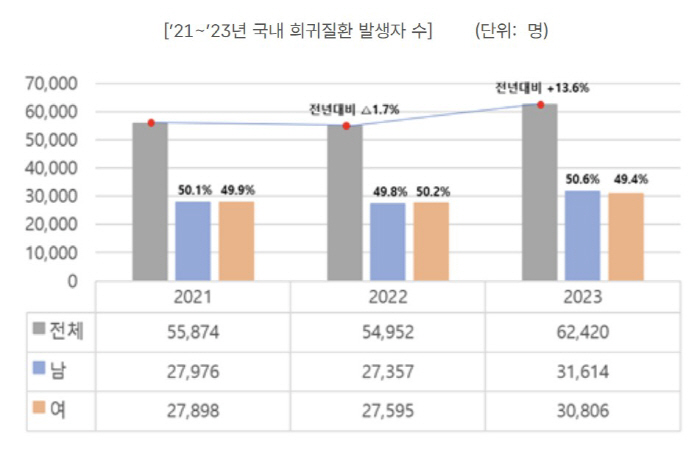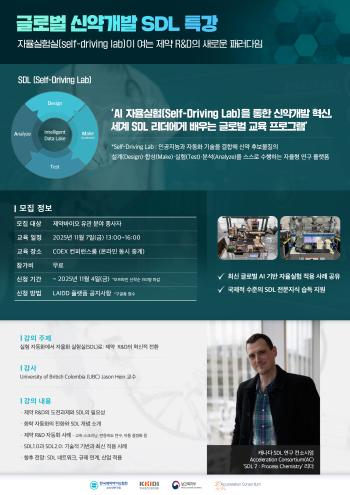62,420 new patients with rare diseases in 2023...The number of people increased by 7,468 compared to the previous year due to the new designation of 42 diseases
Oct 31, 2025
|
According to the '2023 Statistical Yearbook of Rare Diseases' published by the Korea Centers for Disease Control and Prevention, the number of new cases of rare diseases increased by 7,468 in 2023 compared to the previous year, with 42 diseases such as 'polycystic kidney, normal chromosomal dominance (4,830 cases)' and' idiopathic non-specific interstitial pneumonia (313 cases)' being newly designated as rare diseases subject to national management in 2023.
According to the Korea Centers for Disease Control and Prevention, this statistical annual report expanded the scope of information provision by easing the criteria for disclosure of the current status of outbreaks by gender, age group, and region by disease.
Previously, the detailed status of each disease was disclosed only for diseases with more than 200 people, but from this year's report, the current status of all diseases will be disclosed by gender, age group, and region. However, through communication with patients and expert groups, diseases with a very small number of cases of one to three were covered.
Of the 62,420 new cases, 2510 (4.0%) were extremely rare, 113 (0.2%) were other chromosomal abnormalities, and 59,797 (95.8%) were other rare diseases. As for the gender of the occurrence, 31,614 men (50.6%) and 30,806 women (49.4%) were found.
As a result of collecting and analyzing data from the National Statistical Office 'Causes of Death Statistics', a total of 2093 people (3.4% compared to the number of people with rare diseases) died in the year in 2023, and by gender, there were 1280 men (61.2%) and 813 women (38.8%). The ratio of deaths to the number of occurrences by age group was highest among those aged 80 or older (16.7%), followed by 70-79 years old (7.3%), 60-69 years old (3.1%), under 1 year old (2.6%), and 50-59 years old (1.4%).
Meanwhile, among the rare disease cases in 2023, a total of 60,50 people were treated, and the average total medical expenses per person was about 6.52 million won, of which 680,000 won was paid by the patient. Among the rare diseases, the single disease with the largest burden of medical expenses was Go Xue disease (310 million won in total medical expenses and 31.84 million won in out-of-pocket expenses), followed by Morchio syndrome (240 million won in total medical expenses and 24.56 million won in out-of-pocket expenses) and type II mucopolysaccharide disease (210 million won in total medical expenses and 21.32 million won in out-of-pocket expenses).
"Producing accurate statistics is the first step in promoting policies tailored to rare diseases," said Lim Seung-kwan, head of the Korea Centers for Disease Control and Prevention. "We will continue to develop statistical annals so that evidence-based policies can be promoted and related research can be activated in the future." In addition, "We will continue to strengthen the national management system for rare diseases so that it can bring about substantial changes in the lives of people with rare diseases and their families."," he said.
This article was translated by Naver AI translator.














